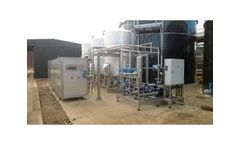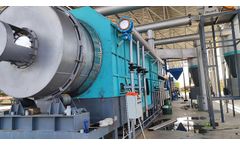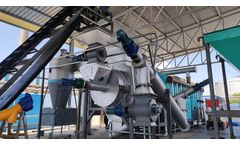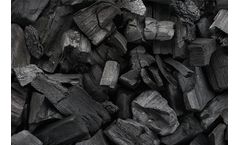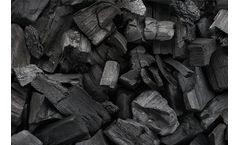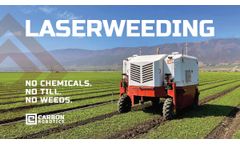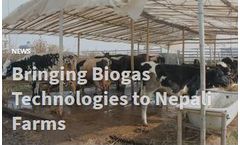Refine by
Crop Yield Articles & Analysis
84 news found
Southern Europe has huge potential to expand its use of anaerobic digestion (AD) and biogas, and in the process reduce greenhouse gas emissions and the reliance on imported natural gas, as well as preventing environmental pollution, dealing with organic wastes and producing a valuable agricultural input in the form of digestate. The key to maximising the adoption and profitability of AD is to ...
Tilapia is a freshwater fish native to tropical and subtropical waters, thriving at temperatures between 24°C and 30°C. Known for its fast growth rate and high tolerance to varying environmental conditions, tilapia is increasingly in demand due to its delicate, white meat. It is relatively easy to farm, adapting well to intensive and semi-intensive aquaculture systems, offering ...
Carbon Intensity (CI) scoring measures a farmer’s carbon footprint, and it accounts for factors like cash crop productivity, minimal tillage, and cover crops to build soil carbon stocks. Like it or not, knowing CI scores and how to improve them has never been as important as now looking toward future market opportunities. Soon, farmers who deliver corn to ethanol plants may be required to ...
Soil Improvement: Biochar enhances soil fertility, water retention, and nutrient availability, resulting in increased crop yields. Waste Utilization: Biochar pyrolysis equipment can convert agricultural and forestry waste into a valuable resource, reducing waste disposal problems. ...
Nutrient Retention: Biochar's porous structure allows it to retain valuable nutrients in manure, preventing nutrient leaching and enabling their controlled release for crop fertilization. Environmental Sustainability in Animal Farming Reducing Greenhouse Gas Emissions Methane Mitigation: Biochar can be added to livestock feed to reduce methane emissions during digestion, ...
By harnessing the power of coconut shell charcoal, farmers can not only improve soil quality but also boost crop yields in an eco-friendly and cost-effective manner. The Process of Coconut Shell Charcoal Production Carbonization of Coconut Shells Explanation of the Carbonization Process The carbonization process involves subjecting coconut shells to high ...
In this article, we delve into the benefits of biomass pyrolysis, explore the diverse products it yields, and focus on the pivotal role of biochar in shaping a more environmentally conscious future. ...
Products of Wood Pyrolysis Wood pyrolysis yields a trio of remarkable products, each holding its own allure and potential for diverse applications. ...
Agriculture is a major part of Ethiopia’s economy, yet only 5% of the country’s land is irrigated. As a result, crop yields on small farms are below regional averages. Those behind the DREAM initiative said that the pilot project will help the country meet its goal to irrigate nearly 5 million acres by 2030. ...
This Friday, July 15, Clarke Energy India participated in the business meet “Sugar Factories: The Future Innovative Energy Hub”, as organized by Cogeneration Association of India in the city of Lucknow, Uttar Pradesh. Uttar Pradesh Sugar Industry is one of the largest sugar industries in the Indian economy. The government is emphasizing on making sugarcane part of a ‘circular ...
Carbon Robotics, an agricultural robotics company, today unveiled its 2022 LaserWeeder implement, an autonomous, laserweeding pull-behind robot that seamlessly attaches to the back of tractors. The new LaserWeeder is a precise, organic, and cost-effective weed control solution for large-scale specialty row crops. In addition to an updated build, the 2022 LaserWeeder features 30 industrial CO2 ...
The fact is, however, that harvesting and processing crops leaves behind a lot of biomass waste including peanut shells, sugarcane bagasse, rice hulls, straw, coconut shells, etc. ...
That's why biochar can be a popular fertilizer to further improve the grade of soil to enhance the yield of crops. Biochar can also be used in the development technique of activated carbon. ...
SEATTLE--(BUSINESS WIRE)--Carbon Robotics, an agriculture robotics company, today announced it secured $27 million in Series B financing from Anthos Capital, Ignition Partners, Fuse Venture Capital, Voyager Capital, Bolt and Liquid2 Ventures to accelerate the company's growth. The funding will be used to scale production of the company’s products, grow its engineering team, establish ...
Access to energy can also boost the irrigation, crop yields, and productivity of local agriculture. Farmers can further protect crop values with cold storage or increase their returns with post-harvest processing. ...
Bifacial panels can offer higher yield at relatively little extra cost to monofacial panels and a first wave of U.S. bifacial solar build starting in 2019 will provide valuable performance data. ...
Photos and written content provided by Lisa O’Doherty, Country Director – Nepal Access to clean cooking is an important issue in Nepal. Nearly 20 million Nepalis use dirty or solid fuels such as wood, dung, or charcoal for cooking. Since 2012, Renewable World has been promoting household, community and enterprise-owned models of Biogas technologies as a means to promote clean ...
With EU policy now approved for 2020-2030, Member States need to maximise their use of European ethanol to meet targets for renewables in transport BRUSSELS, 13 November 2018 – The European Parliament’s final adoption of the EU’s renewable energy policy for 2020-2030 opens the door to a more effective approach to decarbonising transport – but it will be up to Member ...
Biofuel is the energy-producing fuel that is made through the process of biocarbon fixation. Biofuel is hydrocarbon that is obtained from a living organism. What is biofuel? Biofuel is designed to work as an alternative fuel to gasoline, fossil fuel and diesel. While fossil fuel is made from animals and plants that died over centuries ago, biofuel is made from plants that have been harvested. ...
ROOTS projects will tackle the growing problem of soil "carbon debt" by developing sensing technologies to help farmers choose crop varieties that better capture carbon molecules from the atmosphere and store them in their root systems. ...

